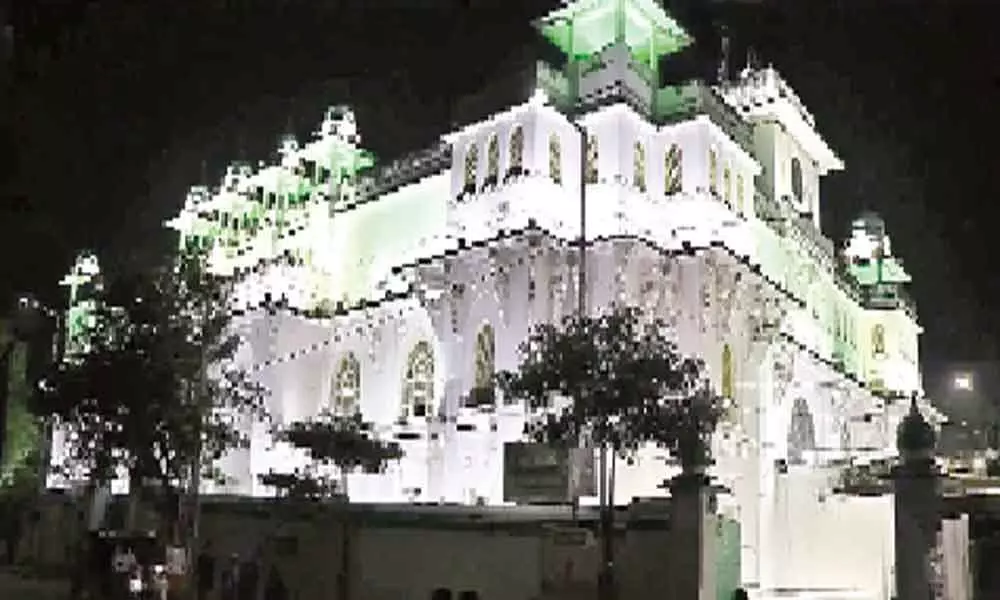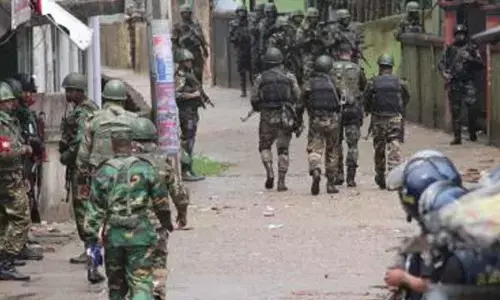90-year-old heritage structure repairs halt

Sandwiched between the Salar Jung and Nizam Museums, lies the house of mourning, Aza Khana e Zehra, also known as Madre-e-Deccan Ashoorkhana, built in 1930 by Mir Osman Ali Khan, the seventh Nizam of Hyderabad, in memory of his mother Amtul Zehra Begum, is under renovation but due to delay in the release of bills, work has come to a halt.
Dar-ul-shifa: Sandwiched between the Salar Jung and Nizam Museums, lies the house of mourning, Aza Khana e Zehra, also known as Madre-e-Deccan Ashoorkhana, built in 1930 by Mir Osman Ali Khan, the seventh Nizam of Hyderabad, in memory of his mother Amtul Zehra Begum, is under renovation but due to delay in the release of bills, work has come to a halt.
Narayana, Deputy Director, Engineering, (Full additional charge), Department of Heritage Telangana, said, "A major part of the work has been completed. We hope to complete the work in next two months." However, the caretaker of Aza Khana e Zehra, Mohammed Abid is skeptical. He says, "The work started last year and should have been completed by now. We understand that the bills are not released to the contractor, thus the delay."
The department released Rs 50 lakh for the restoration of the structure, which was designed by Zain Yar Jang. The roof was repaired using lime plaster. The structure is imposing with green domes and latticed windows. Built in Indo-Saracenic style with chatris and eaves with brackets, the mourning house is home to thousands especially during Muharram.
Spread over 4,500 sq yds with a seating capacity for 25,000, Aza Khana e Zehra is one of the biggest Ashoorkhanas in the city. A stone's throw away from Purani Haveli where the seventh Nizam's mother lived, mourning house is revered by the people.
Aza Khana e Zehra is abuzz with people during Muharram. The place takes a mystical and solemn hue and reverberates with singing and wailing to recall the martyrdom of Hussain in Karbala. The place is bedecked with chandeliers dating back to several decades but are usually covered and lit only during important occasions.
On important days, the gold and diamond-studded alams (battle standards) are displayed for worship. Syed Mehdi Ali, a resident of Dar-ul-shifa, says, "Alams are symbolic and we give a lot of importance as they represent the martyrs who died on Ashoora. The government needs to protect the building as it is a reflection of the cultural history of the Deccan."















